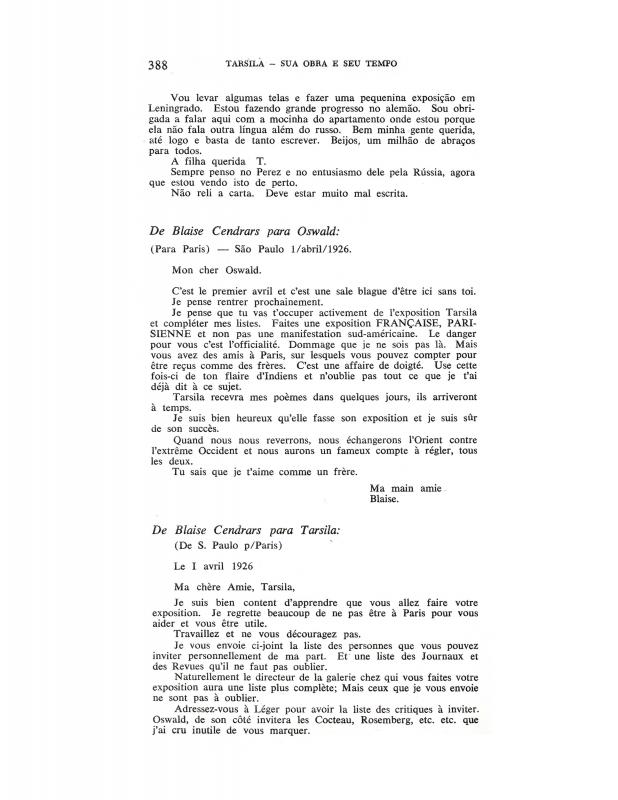The book Pau-Brasil is dedicated to the Swiss poet Blaise Cendrars, “on the date when Brazil was discovered.”
Oswald de Andrade (1890–1954) was the creative and intellectual pillar that supported the founding of the so-called Movimiento Antropófago; he contributed the cornerstone of the ideas and theories of this Brazilian modernist movement: the “Manifesto antropófago,” which was written in 1928, four years after its closest forerunner, the “Manifiesto Pau-Brasil.”
The Pau-Brasil movement represented an essential aspect of early Brazilian modernism (1922–26), whose exponents Oswald de Andrade, Mário de Andrade, and the painter Tarsila do Amaral⸺accompanied by Blaise Cendrars⸺traveled together through the interior of the country in 1924. The tour, which provided the background for the Swiss poet’s book, was known as the “caravana da descoberta do Brasil” [Discovery of Brazil Caravan]. The trip (and La Semana de ‘22) was sponsored by the millionairess Doña Olívia Guedes Penteado. During Holy Week, the group visited the baroque cities of Minas Gerais (São João del Rei, Tiradentes, Ouro Preto, and Congonhas do Campo) and the state capital. While staying at the Grande Hotel in Belo Horizonte, they spent time with the poet Carlos Drummond de Andrade, who at that time was still part of the avant-garde. The journey, which the group described as a “caravan devoted to the discovery of Brazil,” no doubt spawned the Movimiento Pau-Brasil, whose search for an original source embraced indigenous cultures as well as the rural landscape (in Minas Gerais or in São Paulo) that they sought to convey through a “caipira” [rural, country, rancher] style of artistic expression.
[As complementary reading, see the following articles in the ICAA digital archive: “Manifesto Pau-Brasil” (doc. no. 781051) and [“’Pau-Brasil’, marca de fábrica…”], both by Oswald de Andrade; “Pintura Pau-Brasil e antropofagia,” by Tarsila do Amaral (doc. no. 784978); and the letter to Oswald dated 1926 (doc. no. 780570].



